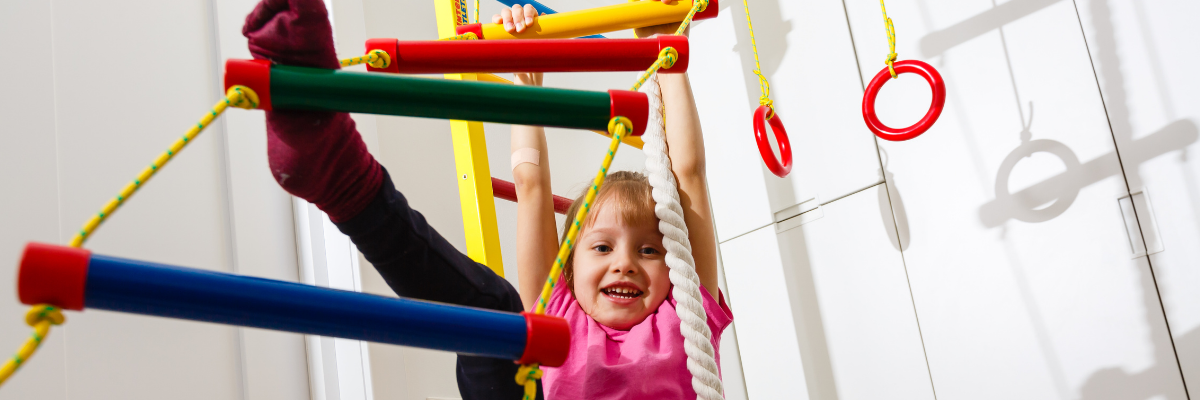What is a Sensory Diet?
As a COTA, during my first visit with a family for Occupational Therapy Services I am looking for and asking about ways to develop a sensory diet for home, school and/or community use.
I often get the question, “What is a Sensory Diet?”
A Sensory Diet is a personalized, organized plan that provides sensory input activities that a person needs to regulate their body throughout the day.
What does it mean to “regulate”?
Sensory regulation is easier to understand once you understand how your senses impact your body. The five senses known to most people are taste, touch, smell, sight and sound. Some people are unaware that you also have two other senses: vestibular and proprioceptive. The Vestibular System is responsible for regulating spacial orientation and providing the brain with information about movement and head position so that our body’s can coordinate movements appropriately. The Proprioceptive System helps regulate body movement by providing our brain with information about force provided primarily through our joints and muscles. Now we have seven systems to look at! To understand more about children’s sensory systems, how they affect learning and sensory integration therapy, read our blog: “Making Sense of Our Experiences.”

What can be addressed with a sensory diet?
Jumping, crashing and or falling on purpose could look like a kiddo is being too rough or is clumsy. We want to figure out why this is happening. Could this be that the kiddo’s body is not confident about where it is in space, which is regulated by the vestibular system? Could this be because the kiddo’s body is considered “under responsive”? This means simply that this kiddo’s body may not register textures or body movements on the same scale as yours or mine. They would be considered UNDER responsive because their body is always looking for MORE sensory input. If their sensory system is not regulated, it will most likely cause them to try to find ways to do that on their own. This may come out in excessive jumping, movement, crashing into things, falling on purpose, touching everything nearby, etc. This can be frustrating and scary for a parent because the last thing you want is to see your kiddo hurt!
What sensory diet look like on a day-to-day basis?
This is where a sensory diet comes into play. A sensory diet will be comprised of special exercises that are specific to your child’s age, physical and cognitive capabilities. We will also look at your schedule for the day and what items you have at your availability. This does not necessarily mean that you will need 3-4 hours of strength training with your kiddo or a gym with equipment to complete these tasks. It can as simple as using the own body in appropriate ways to provide the input needed! For example, if you are out in the community and see a lot of high energy movements coming from your kiddo, try bunny hopping all the way down the isle at the store or have them help you care bags of groceries, etc. At home, depending on the child’s age and abilities, helping with household chores such and carrying the laundry basket, vacuuming, wiping down the table after dinner, etc. Input can also be provided by drinking thick liquids like milkshakes through a straw, eating crunchy foods/snacks and chewing gum. These simple activities provide the child with the gross motor movement, deep pressure through the joints/muscles, heavy work (as long as it’s appropriate for the age) and the confidence of knowing that they CAN feel regulated!
How can Carolina Therapy Connection help?
Each sensory diet will be very specific to each child, so it is important that you stick with it and consult with your Occupational Therapy Practitioner before making significant changes or if it does not produce the outcomes you are expecting. Please also remember that this change does not happen over night, so please don’t be discouraged if there is not an immediate change. Think of it like a weight loss diet. You cannot expect to eat healthy and exercise for one day and reach the outcomes you want. It takes work and dedication on all parts! The important element here is that the child, with your help as parents, learns helpful and appropriate strategies to regulate their body. This will help in so many more areas such as; school performance, attention, behaviorally, emotionally, etc.
Please talk to your Occupational Therapy Practitioner about a Sensory Diet today or call our clinic at 252-341-9944 to get started!
Written by: Shelby Godwin, COTA/L, AC

Image References: Tools to GrowOT






















